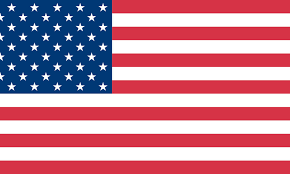A Guide to Essential Oil Labels

Essential oils have emerged as popular gifts for friends and family during holidays. If you’re a business owner in the industry, it's important to understand the significance of labeling when it comes to attracting customers. Whether your target audience seeks relaxation or desires an effective skincare experience, the right label on your essential oil packaging can make all the difference. In this guide, we will walk through what you need to know about labels.
Essential Oil Label Requirements
When it comes to selling essential oils, it's crucial to follow the labeling requirements set by FDA, otherwise, it could lead to penalties for your business including warning letters, fines, etc.
The labeling requirements for essential oils vary on their “intended use”, which fall into three categories including cosmetics, drugs, or both.
Cosmetics refer to products that are only used for cleansing the skin or for perfume use.
- Product Name: name of the product, such as "Lavender Essential Oil".
- Net Quantity: Indicate the weight, measure, or numerical count.
- Name and Place of Business: Provide the name and address of the manufacturer or distributor)
- Material Facts: Include key information about the product that consumers should be aware of.
- Warning&Caution Statement: State potential hazards with the product
- Ingredients: Provide a list of all ingredients used in the essential oil.
If an essential oil is intended for use as a drug, meaning it is used for preventing or treating illness. The label requirements should include extra information:
- Alternative Ingredient List Order
- Specific Ways to Deal with Blended Ingredients, meaning the label should provide instructions on how to handle the product properly.
What to consider when purchasing the right labels
You should first consider your bottle shape and size. For example, if your bottle is small-size, you might want to choose a rectangle-shape label that wraps the bottle, which provides enough space for printing all the key information.
It's also crucial to select labels that are waterproof and oil-proof to prevent smudging, fading, or peeling. It could be hard for customers to read the information if the label is deteriorated by oil or water, and it decreases customer satisfaction. Thermal labels, laminated labels, and foil labels are all good options for the solution. White thermal labels are excellent for ensuring that all mandatory information, such as ingredients and warnings, is highly visible and easy to read.
Let’s not forget that an increasing number of customers are aware of environmental issues, and opting for energy-saving materials would help to resonate with your customers who share the same value.
Lastly, consider whom you are targeting. What is their demographic? What is their interest? What style of design would be appealing to them? A solution to this is to start a poll on social media or a newsletter and let your customers decide what they’d like to pay for.
Commonly used label types
There are several commonly used label types with their own features.
- Clear labels: They look great on transparent or glass bottles as it gives a natural look.
- Paper labels: They are inexpensive compared to other types of material. Yet, they are easily damaged by oil or water, and it's a bit hard to peel off without leaving residue on the bottle.
- Glossy labels: They are often laminated so it provides protection from oil and water. It creates visual appeal to the bottle but could also be a bit costly overall.
- Blank thermal labels: They are made of direct thermal printing technology which is generated by heat. They are eco-friendly and BPA-free, and they are resistant to oil and water. However, it could be damaged when exposed to the sun or heat for a long time, so it’s recommended to keep the bottle in a cool place.
- Foil labels: These labelsadd a touch of luxury to bottles. They’re eye-catching when used for branding and they are often used for high-end essential oil products.
Wrap up
When it comes to distributing your own private essential oil labels, the choices can be overwhelming. Here at Munbyn, we offer a wide range of options. You have the flexibility to customize your labels using our Munbyn Print app to make your brand stand out. To begin your journey with private-label essential oils at Munbyn, click here. Feel free to reach out to us with any questions or inquiries. Have fun labeling!

